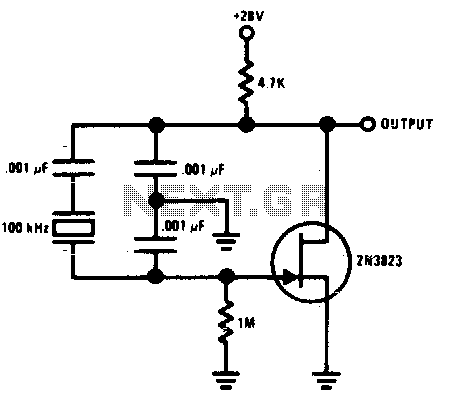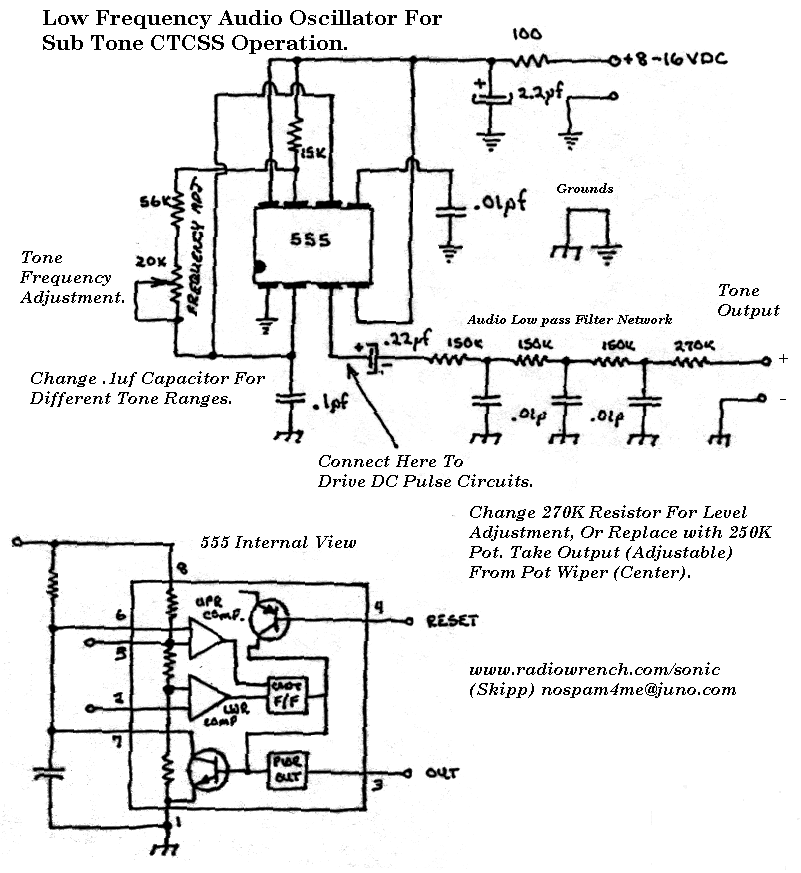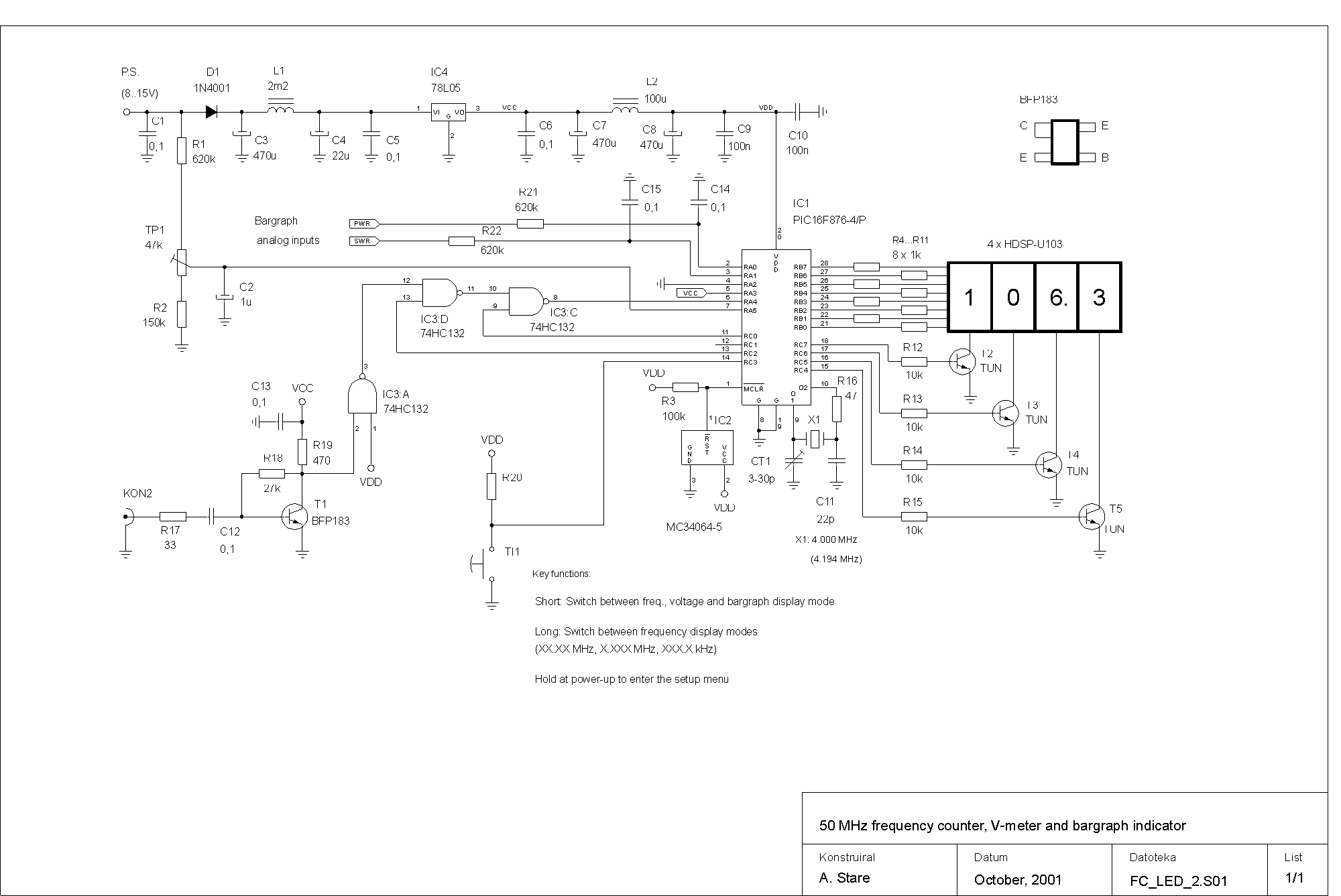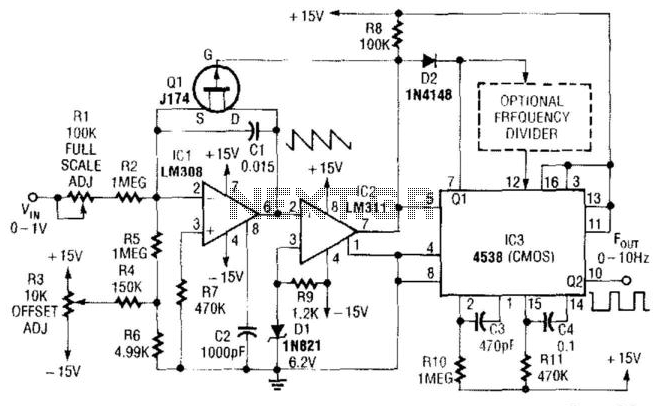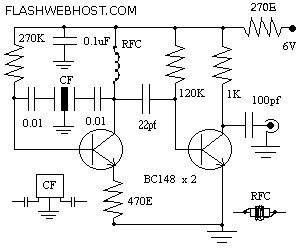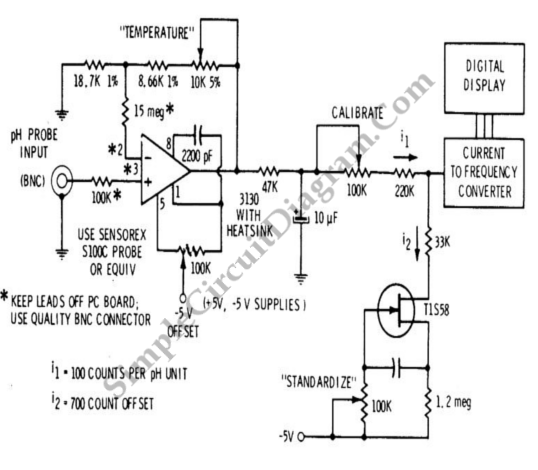
Frequency Shift Keyer
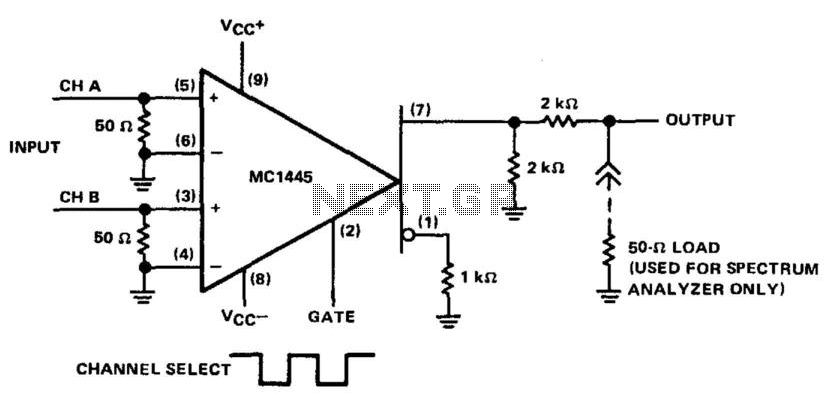
Apply a signal to each differential amplifier input pair. When the gate voltage changes from one extreme to the other, the output can alternate between the two input signals. When the gate level is high (1.5 V), a signal applied between pins 5 and 6 (channel A) will be transmitted, while a signal applied between pins 3 and 4 (channel B) will be suppressed. This process results in a binary-to-frequency conversion that is directly related to the binary sequence driving the gate input (pin 2).
The described circuit utilizes a differential amplifier configuration to achieve signal selection based on the gate voltage level. In this configuration, the differential amplifier has two input channels: channel A and channel B, associated with pins 5, 6 and pins 3, 4, respectively. The operation of the circuit is contingent upon the voltage level present at the gate input (pin 2).
When the gate voltage is set to a high level of 1.5 V, the circuit is designed to allow the signal from channel A (pins 5 and 6) to pass through while simultaneously suppressing the signal from channel B (pins 3 and 4). This selective signal processing enables the circuit to effectively switch between two input signals based on the gate voltage, facilitating the conversion of a binary input into a frequency output.
The binary-to-frequency conversion is directly influenced by the binary sequence applied to the gate input. As the binary sequence changes, the gate voltage transitions between its high and low states, causing the circuit to alternate the output signal between the two channels. This results in a frequency output that corresponds to the binary input sequence, making the circuit suitable for applications in digital signal processing, communication systems, and data encoding.
In summary, the described differential amplifier circuit provides a means to convert binary signals into frequency outputs through controlled signal selection based on gate voltage levels, enhancing its utility in various electronic applications. Apply a signal to each differential amplifier input pair. When the gate voltage is changed from one extreme to the ot her, the output can be switched alternately between the two input signals. When the gate level is high (1.5 V), a signal applied between pins 5 and 6 (channel A) will be passed and a signal applied between pins 3 and 4 (channel B) will be suppressed. In this manner, a binary-to-frequency conversion is obtained that is directly related to the binary sequence, which is driving the gate input (pin 2).
The described circuit utilizes a differential amplifier configuration to achieve signal selection based on the gate voltage level. In this configuration, the differential amplifier has two input channels: channel A and channel B, associated with pins 5, 6 and pins 3, 4, respectively. The operation of the circuit is contingent upon the voltage level present at the gate input (pin 2).
When the gate voltage is set to a high level of 1.5 V, the circuit is designed to allow the signal from channel A (pins 5 and 6) to pass through while simultaneously suppressing the signal from channel B (pins 3 and 4). This selective signal processing enables the circuit to effectively switch between two input signals based on the gate voltage, facilitating the conversion of a binary input into a frequency output.
The binary-to-frequency conversion is directly influenced by the binary sequence applied to the gate input. As the binary sequence changes, the gate voltage transitions between its high and low states, causing the circuit to alternate the output signal between the two channels. This results in a frequency output that corresponds to the binary input sequence, making the circuit suitable for applications in digital signal processing, communication systems, and data encoding.
In summary, the described differential amplifier circuit provides a means to convert binary signals into frequency outputs through controlled signal selection based on gate voltage levels, enhancing its utility in various electronic applications. Apply a signal to each differential amplifier input pair. When the gate voltage is changed from one extreme to the ot her, the output can be switched alternately between the two input signals. When the gate level is high (1.5 V), a signal applied between pins 5 and 6 (channel A) will be passed and a signal applied between pins 3 and 4 (channel B) will be suppressed. In this manner, a binary-to-frequency conversion is obtained that is directly related to the binary sequence, which is driving the gate input (pin 2).
